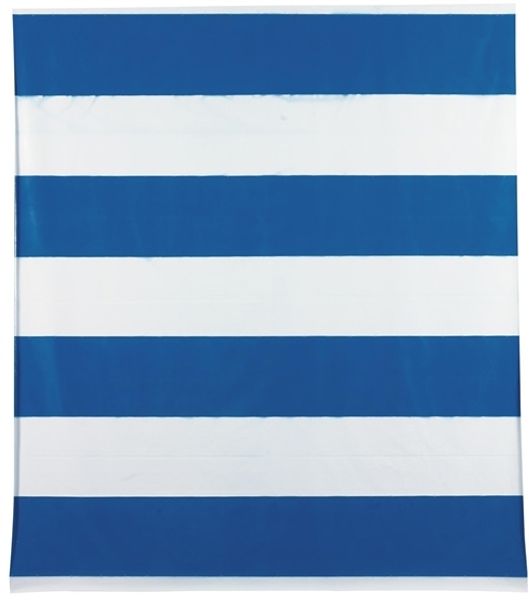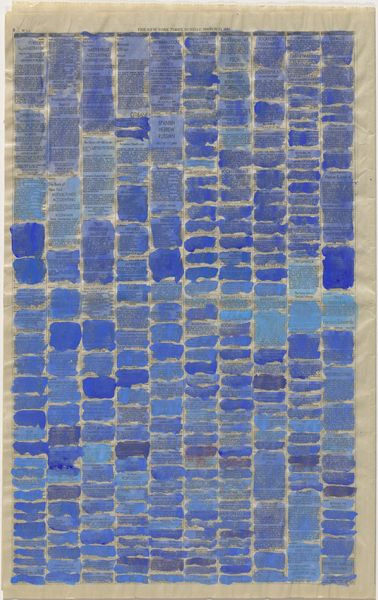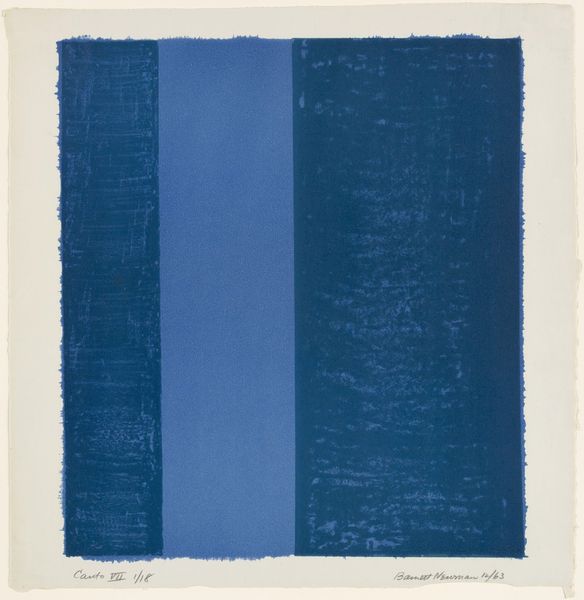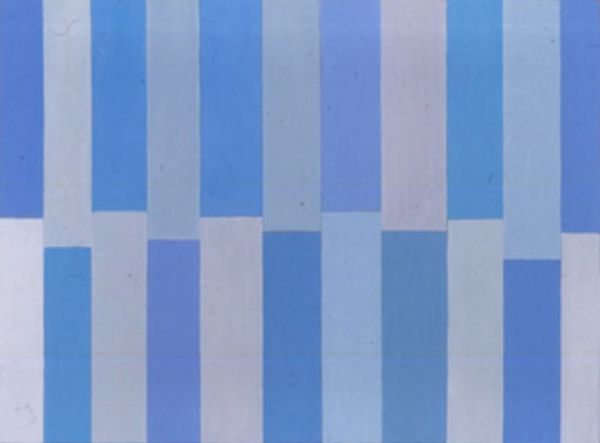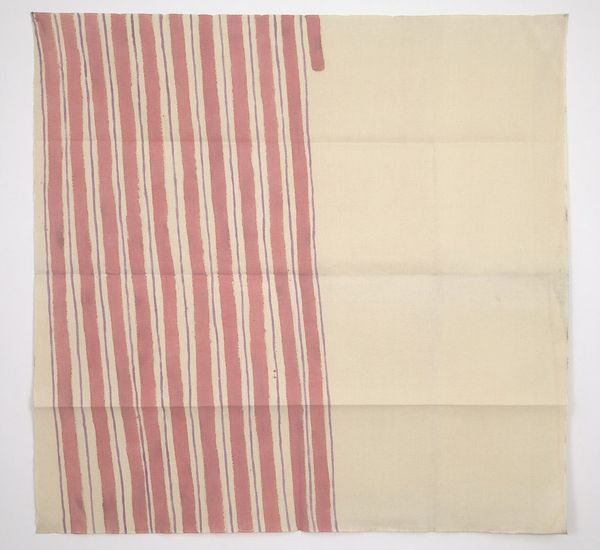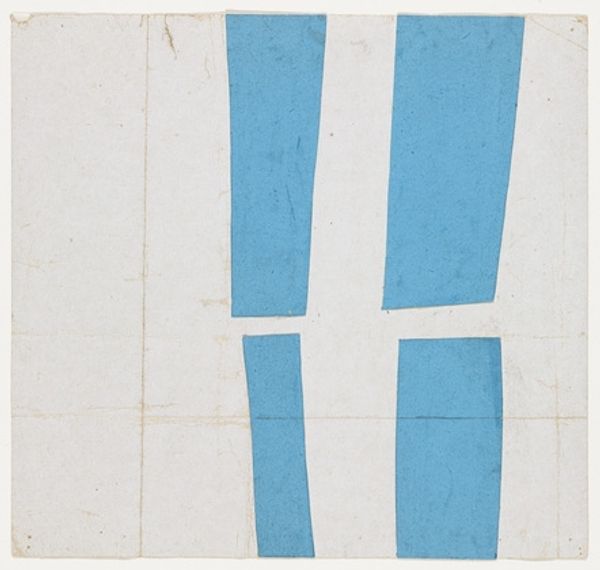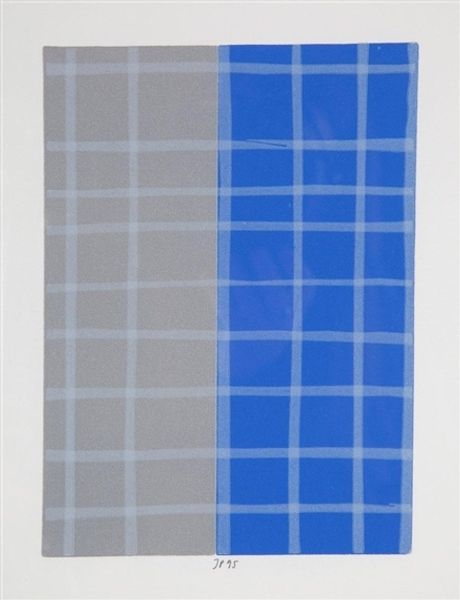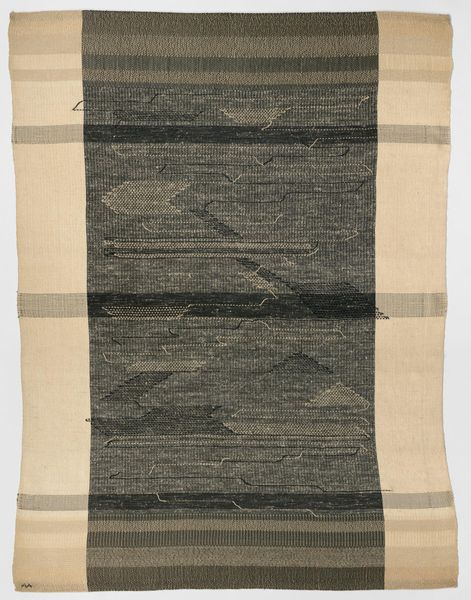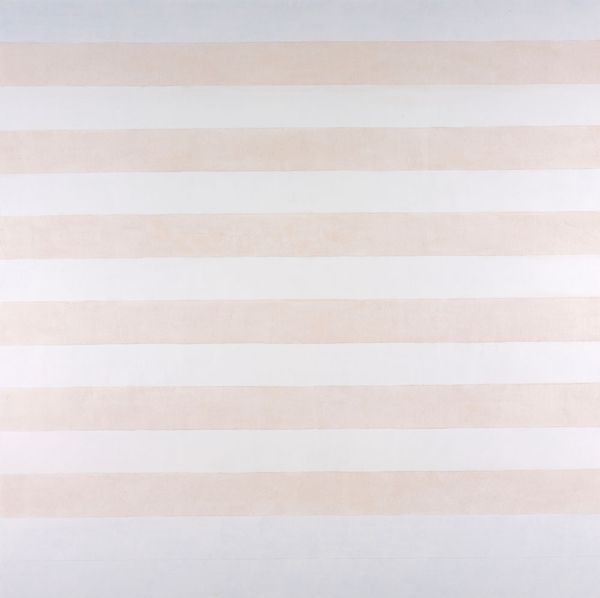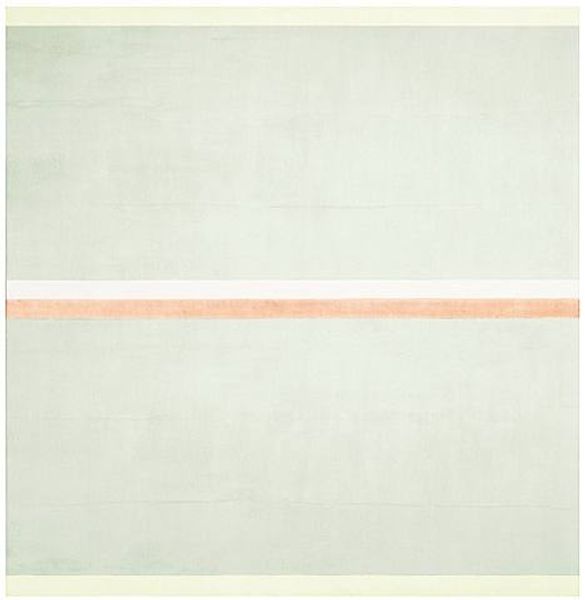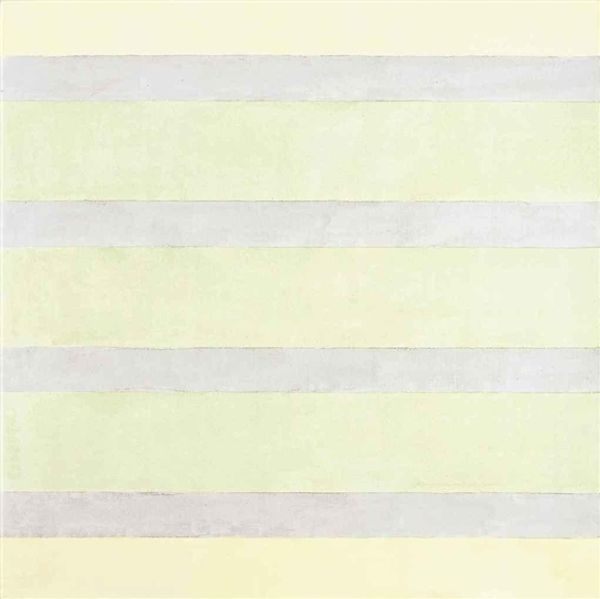
Copyright: Agnes Martin,Fair Use
Editor: Here we have Agnes Martin’s "Untitled" from 2001. It’s this square canvas dominated by soft blues and horizontal lines, a study in quiet repetition. It feels almost… ethereal, like a faded memory. What do you see in this piece? Curator: I see a radical proposition. Martin's minimalism wasn't just about stripping away, it was about making space—space for feeling, for thought. Those pale blues and imperfect lines challenge the hyper-masculine bravado often associated with abstract expressionism, don't you think? They assert a different kind of power, one rooted in quiet contemplation and a subtle defiance of dominant norms. Editor: I guess I hadn't really considered that reading, but that makes sense given the broader cultural context of the time and how female artists were perceived. But what about the grid structure itself? Is that also part of the statement? Curator: Absolutely! The grid, in its apparent simplicity, can be interpreted as a framework that both contains and liberates. It provides a structure, yes, but within that structure, Martin allows for subtle variations, irregularities that speak to the human hand and the imperfections of lived experience. In a way, it mirrors societal structures, the way they can be simultaneously enabling and confining. Do you see that tension at all? Editor: I do now! So it’s not just abstract shapes and color, it’s almost a quiet resistance embedded in the artistic choices? Curator: Precisely! Martin’s work becomes a potent commentary on gender, power, and the very act of seeing, even today. Editor: This has really reshaped how I view minimalist art. I always thought of it as cold and detached, but I can appreciate it on a different level now, as something much more subversive and nuanced. Curator: Indeed. It reveals how even the simplest forms can carry profound cultural weight.
Comments
No comments
Be the first to comment and join the conversation on the ultimate creative platform.
